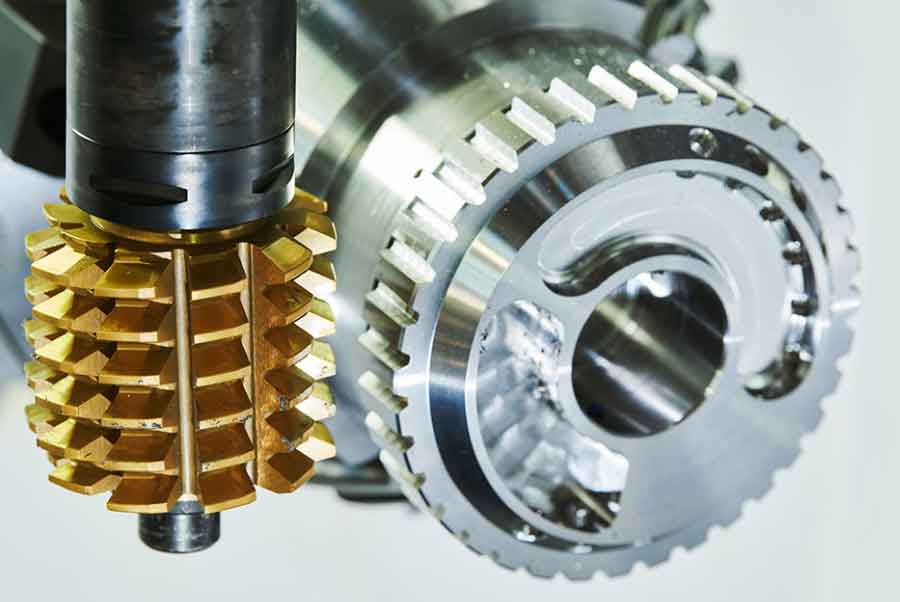
Gear hobbing, a widely used process for gear manufacturing, continues to evolve and innovate to meet the demands of modern industry. Advancements in gear hobbing technology have led to improvements in efficiency, precision, and versatility. This article explores some of the key innovations that are shaping the future of gear manufacturing through gear hobbing.
I. High-Speed Gear Hobbing:
High-speed gear hobbing is a significant innovation that has revolutionized gear manufacturing. Traditional gear hobbing processes were limited by cutting speeds, resulting in longer cycle times. However, high-speed gear hobbing employs advanced machine designs and tooling materials to achieve significantly higher cutting speeds. This innovation has led to reduced cycle times, increased productivity, and improved gear surface quality. High-speed gear hobbing enables manufacturers to meet the demands of high-volume production while maintaining high precision and reliability.
II. Multi-Axis Gear Hobbing:
Multi-axis gear hobbing machines have introduced a new level of flexibility and complexity to gear manufacturing. These machines can perform simultaneous motion in multiple axes, allowing the cutting of intricate gear profiles such as double helical gears and non-circular gears. Multi-axis gear hobbing expands the design possibilities for gears, enabling the production of custom and specialized gear geometries. This innovation is particularly beneficial in industries such as aerospace, automotive, and robotics, where unique gear designs are required for specific applications.
III. Dry Gear Hobbing:
Traditionally, gear hobbing processes involved the use of cutting fluids or lubricants to reduce heat and prolong tool life. However, dry gear hobbing has emerged as an environmentally friendly and cost-effective alternative. Dry hobbing eliminates the need for coolant or lubrication, simplifying the machining process and reducing the associated costs and environmental impact. Advanced tool coatings and machine designs enable dry hobbing by minimizing heat generation and friction. Dry gear hobbing also eliminates the need for post-process cleaning, resulting in a more efficient and streamlined manufacturing process.
IV. CNC Gear Hobbing:
The integration of computer numerical control (CNC) technology into gear hobbing machines has brought significant advancements to gear manufacturing. CNC gear hobbing machines offer precise control over cutting parameters, allowing for the production of complex gear profiles with high accuracy and repeatability. The programmability of CNC machines enables efficient gear production, reduced setup times, and enhanced process control. CNC gear hobbing also facilitates the integration of automated loading and unloading systems, further improving productivity and efficiency.
V. Simulation and Optimization:
Simulation and optimization tools are playing an increasingly important role in gear hobbing innovation. Advanced software packages allow manufacturers to simulate the gear hobbing process, predict cutting forces, optimize tool paths, and evaluate the performance of gear designs before actual production. These tools enable manufacturers to identify potential issues, optimize machining parameters, and reduce the risk of costly errors. Simulation and optimization contribute to improved efficiency, accuracy, and cost-effectiveness in gear hobbing processes.
VI. Additive Manufacturing for Hobbing Tools:
Additive manufacturing, or 3D printing, is being explored for the production of hobbing tools used in gear manufacturing. Additive manufacturing enables the production of complex tool geometries and customization, allowing for the creation of unique hobbing tools tailored to specific gear cutting requirements. The use of additive manufacturing for hobbing tools offers potential benefits such as reduced tool weight, improved tool life, and faster tool production times. This innovation has the potential to enhance gear hobbing processes by providing more advanced and specialized cutting tools.
Gear hobbing innovations are shaping the future of gear manufacturing by enhancing efficiency, precision, and versatility. High-speed gear hobbing, multi-axis gear hobbing, dry gear hobbing, CNC gear hobbing, simulation and optimization tools, and additive manufacturing for hobbing tools are all driving advancements in the industry. These innovations enable manufacturers to meet the increasing demands for high-quality gears with complex profiles, reduced cycle times, and improved cost-effectiveness. As technology continues to advance, gear hobbing will continue to evolve, playing a vital role in the production of gears for various industries.
